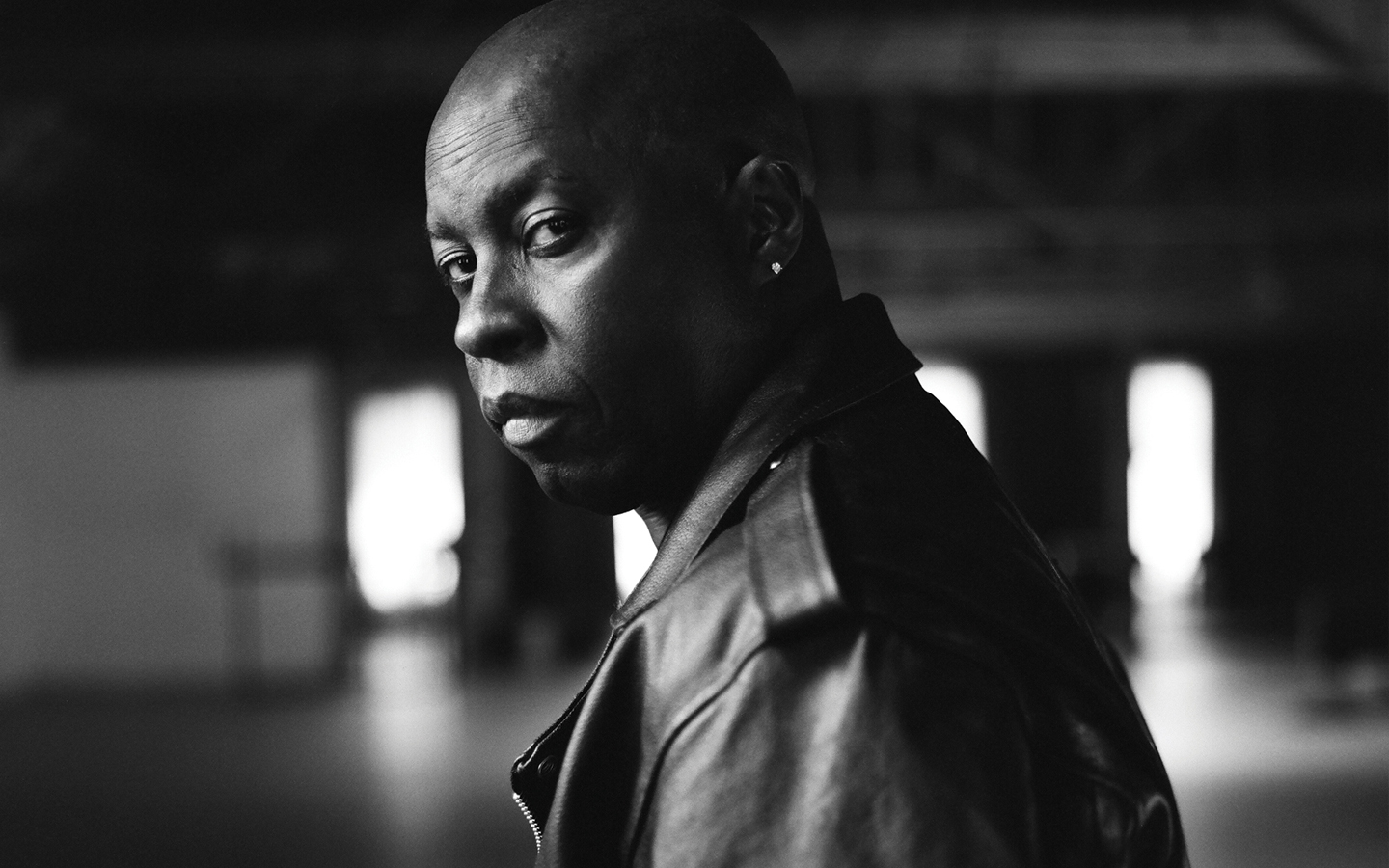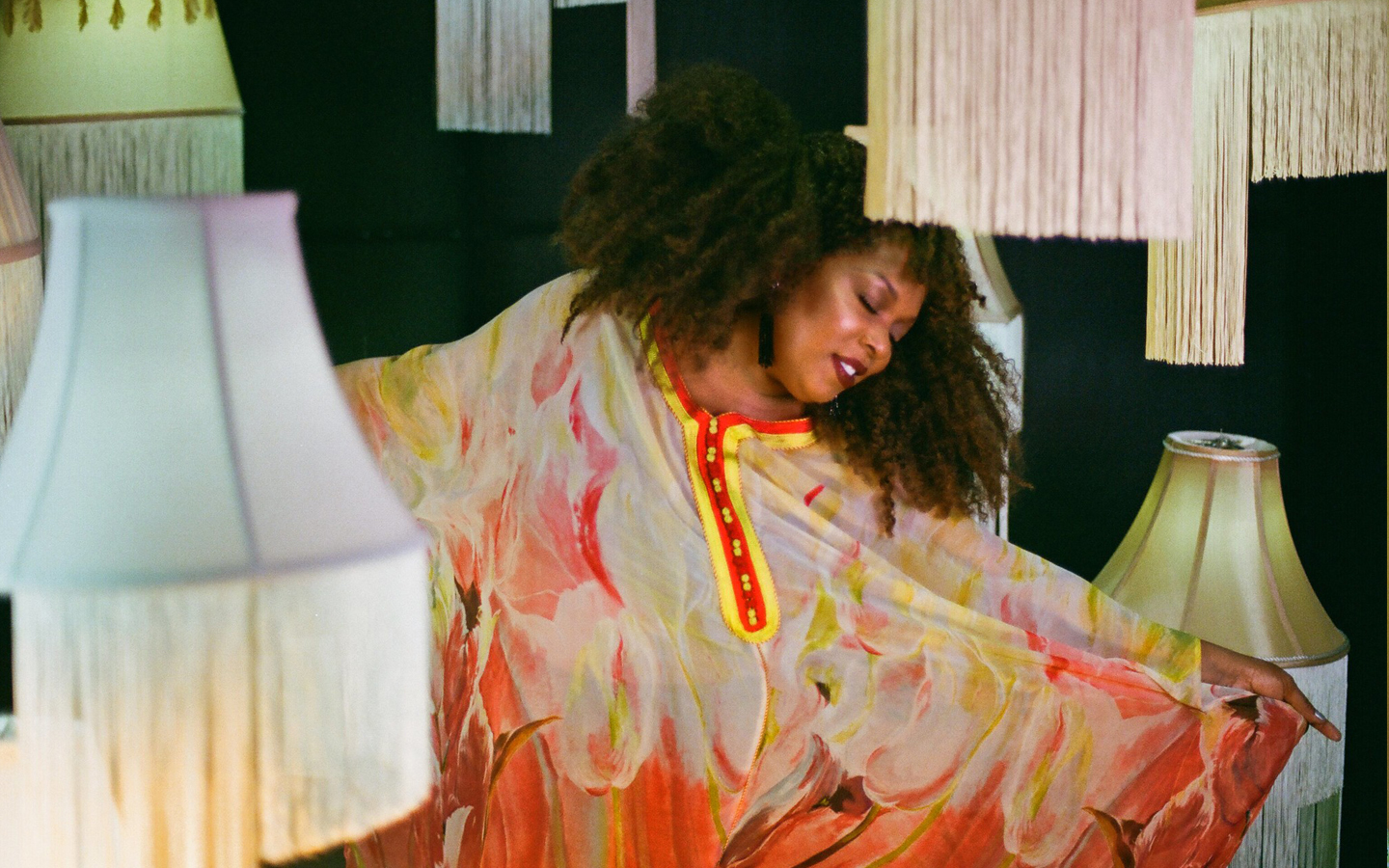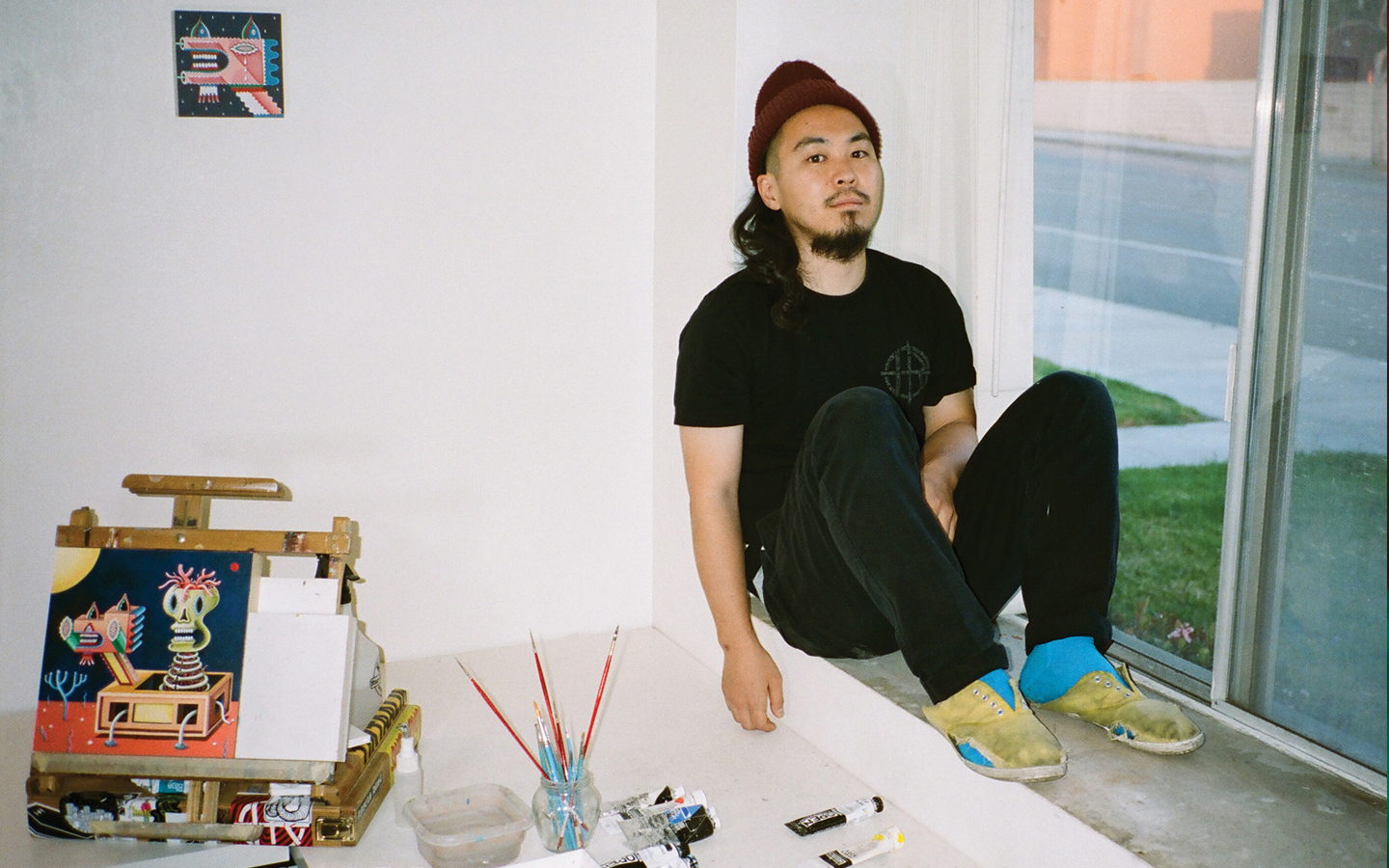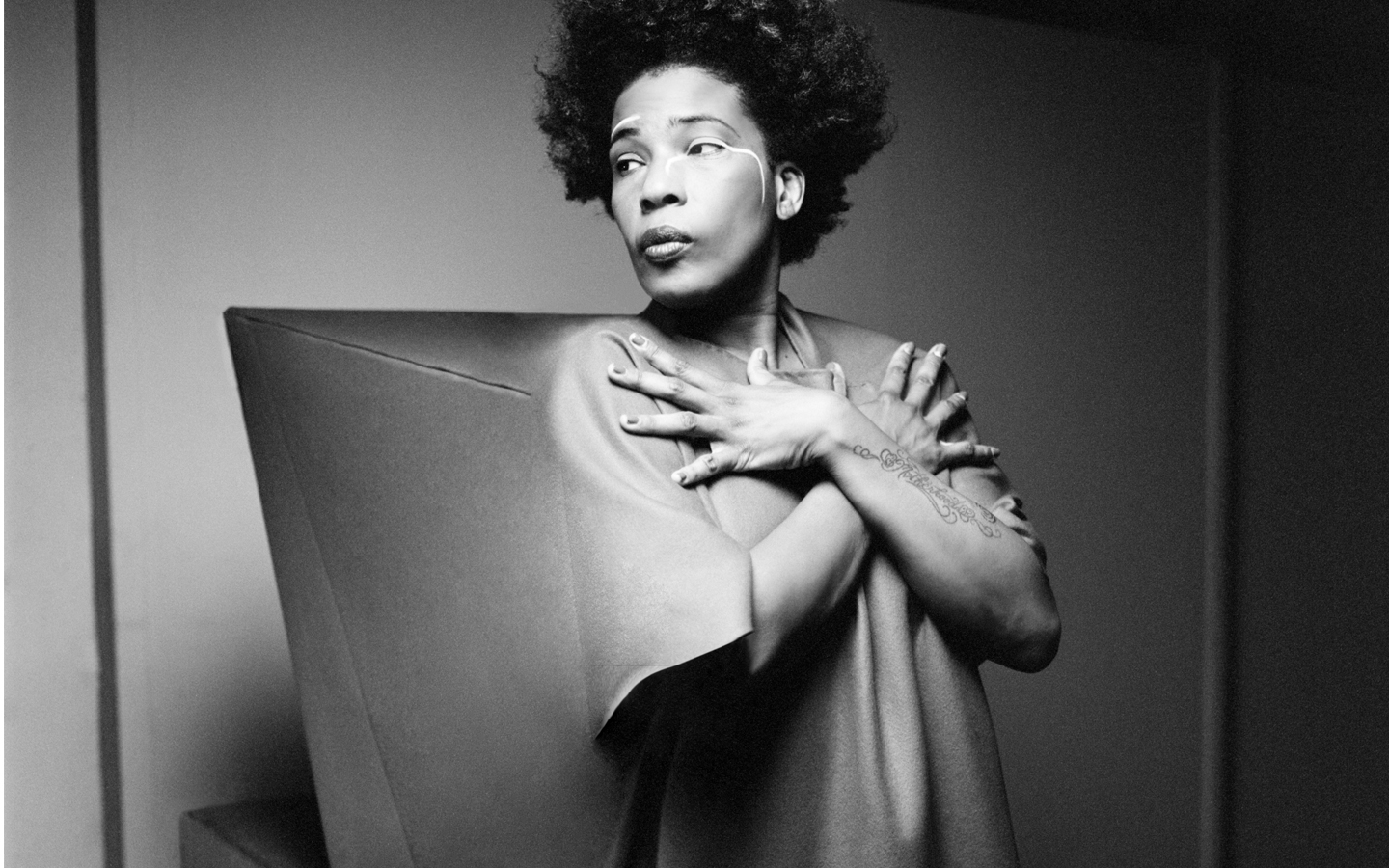
Miles Davis Estate
TEXT AMANDA ROBERTS
VISUAL ADAM HUTSELL
There is no single iteration of Miles Davis. If you met him at 11 in the morning, you might describe an entirely different person than the Miles you’d meet at 11 pm. According to his family members, it was nothing for him to go through head-to-toe wardrobe changes as many as twelve times in a single day. And if the clothes make the man, it makes sense that this mood-stone exhibited personality transformation as well.
It’s no secret that Miles raced through musical styles as quickly as he did ties, hopscotching between genres at breakneck speeds, leaving listeners and critics playing an eternal game of catch-up, trying to make sense of what they heard. Each work, a beautifully articulated piece given to the masses to savor while he was off mastering something new.
This degree of creative restlessness was not exclusive to his music-making. If you were to walk into Davis’ north Malibu home in the 80s and early 90s, you might be overwhelmed by the smell of paint, turpentine, canvas, and from what I am told, the best homemade popcorn in the world. You’d likely catch his son, Erin Davis, and nephew, Vince Wilburn, hanging a fresh painting from the second story interior balcony, while Miles inspected it from below before signing it and moving on to the next one.
Sitting down with Erin and Vince, now executors of the Miles Davis estate and forces of nature in their own right, is an interviewer’s equivalent of striking gold – a truly intimate insight into Davis’ life outside of music. Sure, there is abundant literature covering Miles’ musical career. But our conversation with Vince and Erin opened the door to a relatively unknown slice of Miles’ life – Miles’ turn as a fine artist.
“[Miles] came to visual arts after a doctor recommended it for rehab after a minor stroke,” Erin explained to me. Wielding paints and brushes are known to be a wildly effective method of repairing both physical and mental damage. From there on, Davis was seldom without a sketchbook. His early works consist primarily of drawings, quick figure sketches of those around him (particularly women). The sketches are delicate, slender lines meandering across the paper.
“He would sketch us, sketch me playing drums,” Vince recalled. Even as his work evolved, moving into painting, Miles still compulsively sketched. “If he was doing this interview with you right now, he wouldn’t even be looking at you, he’d be sketching. And you would wonder if he was even paying attention… he’d answer your questions, and then hand you a sketch of yourself after the interview.”
Vince and Erin eventually became facilitators in his art-making process. As his work began to grow in scale and scope, the two would make the trek from Malibu to an art supply store in Culver City to pick up paints and canvases.
As Miles’ practice expanded, he began working on a significantly larger scale. “…and then it evolved into ten and 12-foot canvases,” Erin explained.
“He had a glass dining table, and he used to lay a blank canvas on it,” Vince recalled: “He would do a little bit at a time. Go away, listen to music, watch TV, and come back… do some more. And Erin and I used to take it off the glass, hang it up, so he could see it. And then take it back down… look at it, hang it back up. I remember waiting until he thought it was finished.”
Many artists are not challenged by knowing where to begin, but rather by knowing when a work is complete. Miles, on the other hand, seemed to have no issue deciding when he was done. His art and his music run parallel in that way – he possessed a genuine creative hunger that did not allow space for him to question or ruminate on works. The frenetic pacing of his life seemed to be a need, rather than a choice.
Toward the late 80s, heavily influenced by the modernism of the 60s and 70s, as well as the Memphis Group, a design movement which emerged in the 80s focusing on vibrant colors, Miles began stepping into abstraction. Lively color might be the first thing to jump out at a viewer in these paintings. The canvases are populated with bold yellows, reds and blues, layered through energetic gestural marks. It easy to compare it the works of Wassily Kandinsky. It is rumored that Kandinsky was synesthetic – a neurological anomaly in which one sense can bleed into another.
“I think he saw some of his music in terms of colors. If you listen to the album that Vince was a producer on, it was called Aura, it’s just all about colors. I think he saw a lot of colors in his music, and I think he would represent that in some of his paintings.”
As Davis’ interest in abstraction dwindled, he redirected his style to what might be considered his most mature work. Tribal African influences emerged in these later canvases in the form of totem poles and mask-like bodies unseen in his previous work. Assemblage-inspired elements such as metals, rope and burlap found their way onto his canvases, heightening the level of dimensionality and structure. Figurative elements prevalent in his sketches and his exceptional use of color did not fall by the wayside. Rather, they began to float upon the newly built structure. In these later works there exists a degree of self-assuredness. They were truly his – they embodied most accurately his confidence and reluctance to allow any critique to affect what he created. Firmly rooted, he stood solidly in his art-making practice, mirroring his deeply entrenched philosophy regarding music, developed over many years. He was going to do what he wanted, no matter what anyone had to say about it.
Although Miles’ artwork was shadowed by his musical prowess, it did not remain unseen during his lifetime. Many enthusiastically supported his work, which has been exhibited internationally in Germany, Spain, and here in the United States. The Japanese took a particular liking to his work. His art can also be found in several private collections, including those of Quincy Jones and Lionel Richie.
Bouncing from style to style throughout both his artistic and musical careers may seem to many as being a disjointed way to create, but if you look closely, you will see the essential Miles in all his work. Whether he was fixated on modal jazz, or his later rock and funk inspired tunes, his soul ran through all of it – brazenly Miles. The same thing can be said about his art.
He is the embodiment of what is called multipotentiality – a powerful and insatiable lover of curiosity about all things creative. Not only did he excel in a myriad of disciplines, he perfected them: a master of all trades. As Erin most accurately said, “That’s the mind of a genius.”
Throughout our conversation it became apparent that this level of genius found its way into Erin and Vince’s blood. Like his dad, Erin sketched quietly on the couch as we set up for the interview. Vince strode in with what I counted to be seven different outfits and an entire suitcase of shoes to spice up the subsequent photoshoot. Both are prolific creators: Vince with his own impressive band, The Miles Electric Band, that trailblazes new styles, and Erin as a highly skilled musician and designer.
Erin and Vince have no intention of hiding Miles’ artwork from the world. Unsurprisingly, they have many plans for everything that has remained unseen. “There is a lot of stuff I want to do with it. That is something we want to get into that we are excited about… it’s ongoing. It’s procedural. It’s a work in progress…there are tons of it that people haven’t seen,” Erin explained excitedly.
“Long after he’s gone, people are still trying to figure out his art. Just like they are still trying to figure out his music.”
You may also like
Yvonne Faison
“I came to LA with no car, no job, and no place to live. And I got my first job out of the classif
Yu Maeda
“The skeleton holds a lot of meaning,” Maeda said. “Japanese tattoo artists use it as a symbol
Macy Gray
Ruby will be Gray’s 10th album. “It’s high emotion, it’s intense. Your eyes go right to it.




